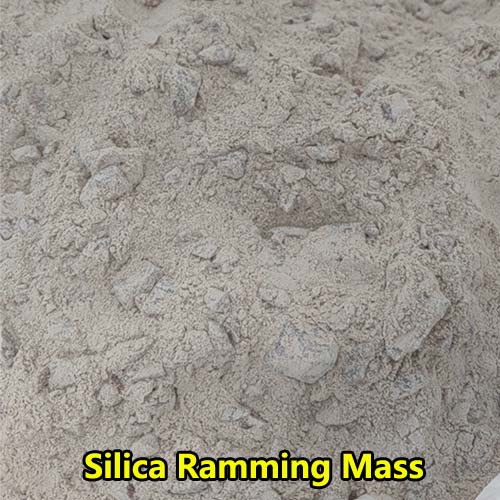Introduction to room temperature thermal insulation refractories
- Fibers: vacuum insulation panels, ceramic fiber blankets, cotton, felt, threads, etc.
- Refractory bricks: lightweight refractory bricks, lightweight high-alumina bricks, lightweight clay bricks
- Casting material: lightweight high-aluminum casting material
There are many specifications of thermal insulation refractory materials. We will briefly introduce them:
1.Vacuum insulation panel
1.1 Characteristics of vacuum insulation panels:
(1) Convenient construction, light weight and cost saving
(2) High temperature resistance, high pressure resistance and long service life
(3) Good high temperature insulation performance
(4) Good thermal shock stability and high mechanical strength
2.Ceramic fiber products
3.Lightweight refractory bricks
3.1 Characteristics of lightweight refractory bricks:
(1) Low density, high porosity and light weight
(2) Low thermal conductivity and good thermal insulation performance
(3) High cost performance and wide application
Thermal insulation refractory performance
- Small volume density, many pores, high porosity and small thermal conductivity.
- The thermal insulation material has stable performance, a clear thermal conductivity coefficient, and a wide applicable temperature range.
- Good chemical stability and no corrosion.
- Good waterproof performance and low moisture absorption.
- Difficult to burn and fireproof, small combustible component, non-flammable or self-extinguishing.
- Good thermal shock resistance.
- Easy to process and construct.
Working principle of thermal insulation refractory materials
Industrial furnaces built with general refractory materials usually have low energy utilization rates. Thermal conductivity is an important data essential for the design of high-temperature thermal equipment. Increasing the use of heat-insulating materials to build furnaces can reduce heat loss from the walls. , improve thermal efficiency, increase the output of thermal equipment, reduce energy consumption, and work more economically and effectively.

Application scope of thermal insulation refractory materials
Insulating refractory materials are used in heating furnaces (furnace walls, furnace bottoms and furnace roofs), open hearth furnaces, heat treatment furnaces, coking furnaces (combustion chambers, regenerators), annealing furnaces, quenching furnaces, etc. in metallurgy, petrochemical, machinery, electronics and other industries. It is used as the inner lining and outer refractory layer of kilns and thermal insulation materials for various high-temperature pipelines, and can also be used as high-temperature sealing materials. It can also be used specifically for the thermal insulation and heat preservation layers of thermal equipment. Good quality thermal insulation refractory materials can replace general dense refractory materials for masonry, which can save energy and reduce construction costs.
Classification of thermal insulation refractory materials
1.According to the use temperature:
(1) Low-temperature insulation materials, with a use temperature below 900°C, such as diatomaceous earth insulation bricks, asbestos, expanded vermiculite and slag wool;
(2) Medium temperature insulation materials, with a use temperature of 900~1200℃, such as expanded perlite, lightweight clay bricks and refractory fibers;
(3) High temperature thermal insulation materials, with an operating temperature of 1100℃-1500℃, such as lightweight thermal insulation high alumina, lightweight corundum bricks, hollow ball products and high temperature refractory fiber products.
2.According to volume density:
(1) General thermal insulation materials, with a volume density between 0.3-1.3g/cm3;
(2) Ultra-light insulation material with a volume density of less than 0.3g/cm3.
3.According to the form of the material:
(1) Powdered and granular insulation materials: expanded perlite, alumina powder, lightweight castables, lightweight refractory concrete
(2) Shaped insulation material: lightweight refractory
(3) Fibrous insulation materials: asbestos, glass fiber, ceramic fiber
(4) Composite insulation materials: insulation boards, insulation coatings
4.According to the manufacturing method:
(1) Raw material method porous products: that is, products made of porous materials, such as diatomaceous earth and its products;
(2) Products made by the burn-out addition method: Products made by the combustible addition method, where sawdust, carbon powder and other materials that are easy to burn out are added to the clay material to give the sintered product a certain porosity, mainly light silicon. ;
(3) Porous lightweight products made by foam method: Porous products made by foam. A foaming agent is added to the clay and the clay is treated by mechanical methods to obtain porous lightweight refractory products.
(4) Porous products made by chemical method: Products are made by chemical method. Carbonates and acids, caustic soda or metallic aluminum are added to the clay, and pores are formed in the product with the help of the gas produced by the chemical reaction.
5.According to the chemical mineral composition or production raw materials: siliceous, clay, high alumina, magnesium, diatomaceous earth, perlite, aluminum silicate fiber, alumina and other thermal insulation refractory materials.
How to choose suitable thermal insulation refractory materials
- According to the operating temperature of the kiln.
- Maximum operating temperature of thermal insulation refractory materials
- Insulation properties, including thermal conductivity, bulk density, specific heat, etc.
- Economic benefits, including price, construction and durability.
Precautions for using thermal insulation materials and refractory materials
- It is prohibited to stack goods on thermal insulation and refractory materials.
- Place in a dry and ventilated place to prevent moisture and rain.
- Reasonably adopt thermal insulation and refractory materials and construction methods with corresponding performance according to design requirements.
- Cut fiber products according to the required amount and do not tear them at will.
High-efficiency thermal insulation refractory materials can not only bring normal kiln operation to users, but also reduce heat loss, reduce kiln operating costs, and slow down the erosion of the kiln lining.
